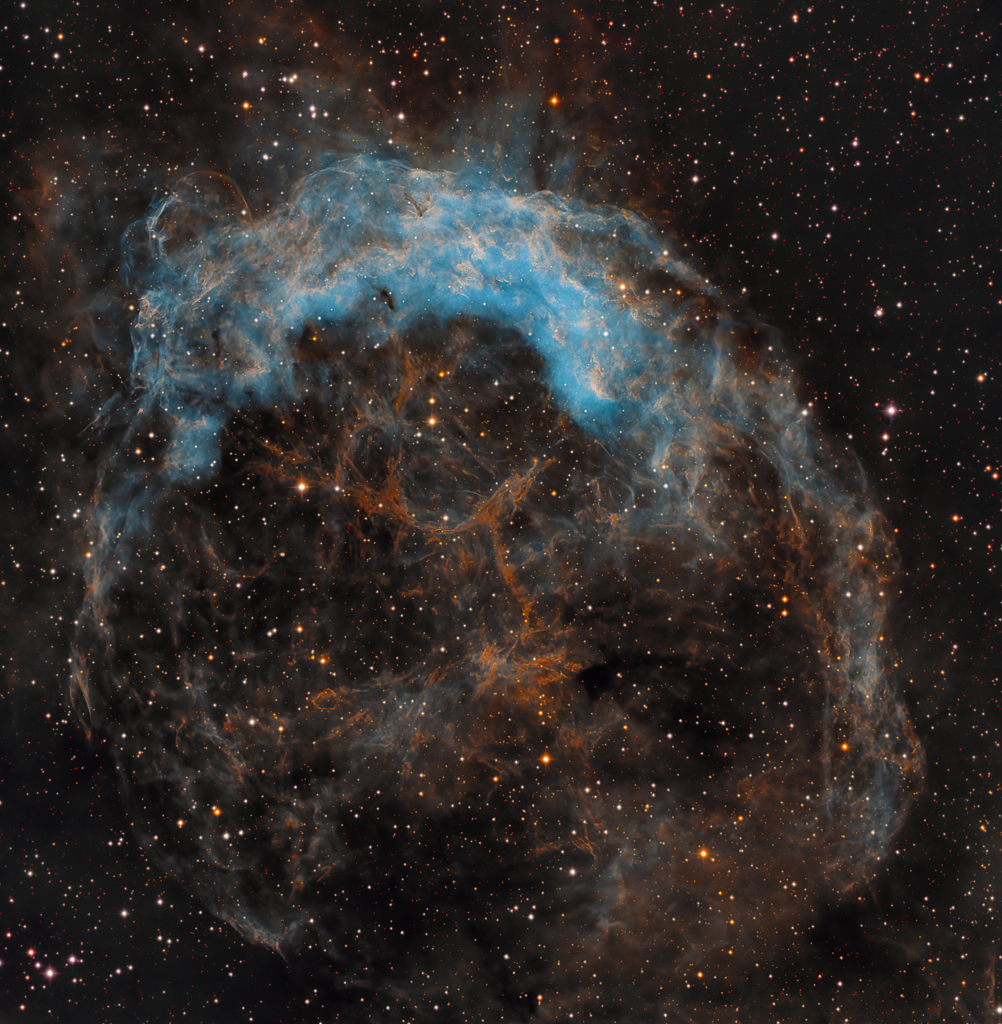2021年05月06日
Windblown NGC 3199
Image Credit & Copyright: Mike Selby and Roberto Colombari
Explanation: NGC 3199 lies about 12,000 light-years away, a glowing cosmic cloud in the nautical southern constellation of Carina. The nebula is about 75 light-years across in this narrowband, false-color view. Though the deep image reveals a more or less complete bubble shape, it does look very lopsided with a much brighter edge along the top. Near the center is a Wolf-Rayet star, a massive, hot, short-lived star that generates an intense stellar wind. In fact, Wolf-Rayet stars are known to create nebulae with interesting shapes as their powerful winds sweep up surrounding interstellar material. In this case, the bright edge was thought to indicate a bow shock produced as the star plowed through a uniform medium, like a boat through water. But measurements have shown the star is not really moving directly toward the bright edge. So a more likely explanation is that the material surrounding the star is not uniform, but clumped and denser near the bright edge of windblown NGC 3199.
Tomorrow’s picture: pixels in space
气泡星云NGC 3199
影像提供与版权: Mike Selby and Roberto Colombari
说明: NGC 3199是位在船底座方向,离我们约12,000光年远的明亮宇宙云。在这张窄波段假色影像里,这团星云涵盖约75光年的区域。虽然深空影像指出它具有接近完整的气泡结构,不过它的上缘远亮于其他区域。星云的中心附近,有颗会发出强烈恒星风的炽热短命沃夫-瑞叶型恒星。当沃夫-瑞叶型恒星的强烈恒星风扫集周围的星际物质时,往往会造就外观饶有趣味的星云。在上面这个案例里,原先以为明亮的前沿是恒星高速穿过均匀介质,所形成的弓形震波,酷似船只于水面产生的船首波。然而,量测指出这颗恒星并非往亮沿移动。因此,更合理的解释是这颗恒星周围物质的分布不均匀,靠气泡星云NGC 3199亮沿这侧的物质较密集。
明日的图片: pixels in space



